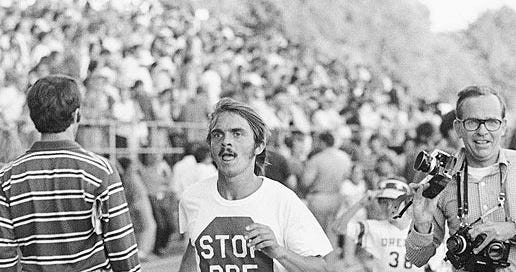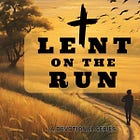28 After the sabbath, as the first day of the week was dawning, Mary Magdalene and the other Mary went to see the tomb. 2 And suddenly there was a great earthquake; for an angel of the Lord, descending from heaven, came and rolled back the stone and sat on it. 3 His appearance was like lightning, and his clothing white as snow. 4 For fear of him the guards shook and became like dead men. 5 But the angel said to the women, ‘Do not be afraid; I know that you are looking for Jesus who was crucified. 6 He is not here; for he has been raised, as he said. Come, see the place where he lay. 7 Then go quickly and tell his disciples, “He has been raised from the dead, and indeed he is going ahead of you to Galilee; there you will see him.” This is my message for you.’ 8 So they left the tomb quickly with fear and great joy, and ran to tell his disciples. 9 Suddenly Jesus met them and said, ‘Greetings!’ And they came to him, took hold of his feet, and worshipped him. 10 Then Jesus said to them, ‘Do not be afraid; go and tell my brothers to go to Galilee; there they will see me.’
— Matthew 28:1-10
It was the kind of moment those who witnessed it would never forget—not because it was planned, but because it was pure. And no, I’m not talking about the resurrection… well, at least not yet.
First, I want to take you to a track in Eugene, Oregon. That’s right—Hayward Field (the old one).
Many runners know the name Steve Prefontaine. “Pre.” The man. The myth. The mustache. He’s often credited with helping ignite the running boom of the 1980s, but more than that, he was a force—a gutsy, front-running firebrand who raced like he owned the track and he was going to win or collapse trying (in fact he quite literally did on a few occasions).
He didn’t play it safe. He didn’t hold back for a kick. He ran from the front and dared you to try to hang on. His popularity soared—but not everyone was a fan. Some folks—maybe rival fans, maybe just some clever jokers—started wearing shirts that said just two bold words: “Stop Pre.”
Maybe it was meant to get under his skin. Maybe it was meant to humble him. But then came one of those moments—the kind you don’t forget. After yet another dominant win at Hayward Field, Pre didn’t just walk off the track. He spotted a fan in the stands wearing that shirt—“Stop Pre.” And depending on who’s telling the story, he either traded for it… or just took it. And then—with the crowd roaring and his sweat still fresh—he pulled it over his head and ran his victory lap in it.
That’s what I’m talking about.
Because you see, in that one gesture, he flipped the script. He took what was meant to shame or stop him, and made it part of the celebration. The shirt meant to limit him became the uniform of his triumph.
And that… that’s Resurrection Joy.
The very first Easter morning didn’t start with shouts of victory. It started in the hush of grief. The women came with spices, not champagne. They weren’t expecting resurrection—they were coming to mourn.
But then the earth shook. An angel rolled the stone away, not so Jesus could get out—he was already gone—but so the women could see in.
“He is not here. He has been raised.”
It’s the ultimate “you thought” moment. You thought death had the final say. You thought the cross was the end of the story. You thought the empire had won again.
But the tomb was already empty.
And friends, this isn’t just about Jesus crossing a finish line and striking a pose. This is about Jesus lapping the forces of death and despair. This is about a Savior who doesn’t just survive—he conquers. Not with violence or power, but with love that cannot be stopped.
He doesn’t take a victory lap despite the suffering—he takes it through the suffering.
That’s what makes this joy so real. Resurrection Joy isn’t naive. It doesn’t skip the pain. It acknowledges the betrayal, the loss, the tomb. But then it says, “Even here—especially here—God shows up.”
By humble means we are reminded that the places in your life that look like dead ends might be resurrection spaces.
It means what the world throws at you—your failures, your fears, the voices that try to stop you—can be picked up and worn as part of your testimony.
It means joy is not an afterthought. It is the declaration that death didn’t get the last word. And it never will.
Jesus takes the shame, the mockery, the cross—and wears it like that “Stop Pre” shirt (…dang I hope that doesn’t sound too corny).
Except now it says, “Stop God”—and guess what? You can’t.
Because God keeps running. God keeps loving. God keeps raising people from things that were meant to destroy them.
And now we—resurrection people—are called to join the lap.
We don’t run it alone. We run it together. In joy. In hope. In the power of a Savior who’s already finished the hardest part and says, Come on, run with me.
This is where “Lent on the Run” has been headed all along.
Through the wilderness, through the testing, through the foot-washing and the weeping, through the cross—we arrive here: The Victory Lap. Not because we’ve done everything right. Not because we’re fast enough or faithful enough. But because Jesus is alive.
And we join him.
So lace up.
Take heart.
The grave is empty.
And the track is calling.
Christ is risen.
He’s already taken the hardest steps.
Now it’s your turn.
Let joy be your pace.
Let love be your form.
Let resurrection be your rhythm.
MAKE EVERY MILE COUNT!!
AMEN!!!
For the Whole Series
Don’t forget their will be no devotion on Sunday, keep tuned in for the series to continue on Monday.






